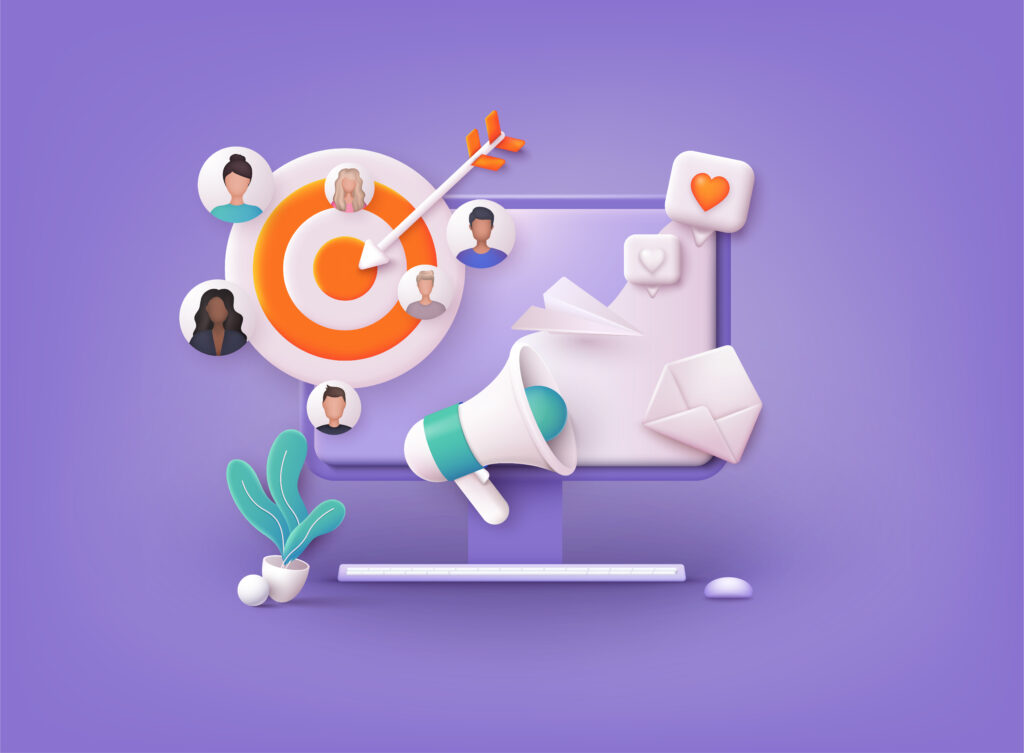
When you think of “B2B” marketing, you think of “Business to Business,” not “Business to Customer.” But this failure to focus on the customer experience or customer marketing is a crucial mistake that many B2B companies make. The modern B2B customer expects a personalized experience that keeps them engaged throughout the entire buyer’s journey. The B2B market continues to grow and fill with competitors, so it’s essential that your marketing is supportive of the buyer’s journey. Powerful customer marketing that engages audiences and drives home your unique value proposition can be a differentiator edge in a crowded market. For your organization to boost customer marketing activities, consider these B2B content personalization tactics.
What Does Customer Marketing Mean in B2B Marketing
In a B2B setting, all marketing efforts are aimed at prospects who you hope will become customers and current customers whom you want to retain and deepen relationships. These marketing efforts should keep customers top of mind at an individual buyer persona level while considering the broader needs of the organizations that these personas represent.
One of the main objectives of customer marketing is to build and solidify trust. To create trust, it is essential to build authority and educate customers through value-added content. Demonstrating credibility on trends and topics through thought leadership content translates to trust in your product or service and addressing their needs.
Another element of customer marketing in B2B marketing is determining what’s needed at each stage of the buyer journey. Ensure marketing efforts support individuals through the entire funnel, from awareness to consideration to decision.
Effective Customer Marketing with Content Personalization Tactics
With a good idea of what customer marketing is, here are four content personalization components that support modern customer marketing.
1. Testimonials and Case Studies
When thinking about building trust, testimonials and use cases are two of the strongest content types. 56% of B2B customers find testimonials to be helpful and 92% of people search out testimonials when making a purchase decision. Genuine, authentic testimonials can be a big factor in turning prospects into customers. Testimonials from customers on their experiences and results with your organization show others a first-hand experience of what it is like working with your organization. Taking this a step further, you can deliver and present testimonials that match a prospect’s pain points.
Case studies are another personalization tactic. Any documentation of clear quantitative results will go a long way with prospects and credibility. Creating case studies that address an array of challenges in many industries, gives you a library of content to show prospects in the decision-making stage. For a more personalized experience, try to deliver case studies that match your prospect’s pain points. This gives them a close comparison of what using your product or service would be like and the potential results.
2. Email Nurture Cadence
After a prospect shows initial interest in your product, service or solution, it is important to keep them engaged. 79% of B2B marketers find email to be the most effective way to distribute content. Email marketing can be particularly effective for a nurture cadence. An effective email nurture cadence should include many emails that promote relevant content. Personalization comes into play here as it is instrumental for the content to apply to the prospect. For a nurture email cadence, one email could include a blog about project challenges banks are facing, another includes a checklist of what to look for in a project management platform and finally a case study on a bank utilizing a project management platform. The email cadence starts with a simple content piece to engage the audience then moves into more valuable content that moves them further along in the buyer’s journey.
3. B2B Paid Advertising
Paid ads are a perfect way to incorporate B2B personalization tactics for more effective customer marketing. Retargeting or remarketing ads are one of the ad types that are ideal for this. Whether it is Facebook Ads, LinkedIn Ads or Google Ads, whatever ads platform your organization is utilizing, if there is a retargeting feature, you should be using it. As the platform collects the data of who has visited what landing pages on your website and their search habits on the internet, it knows the best locations to retarget these visitors with ads for your product or service. It is almost a hands-off approach to personalization since the ads platform does most of the work for you. But, getting the ads right with engaging copy and imagery if utilizing is key for conversion on these external sites prospects are being retargeted on. Looking for more tips on effective ads? Check out this blog.
4. Exclusive Events
Hosting exclusive events where prospects get to see your product or service in action is another great way to help build trust with your potential buyers. It also works as a two-way street of info gathering as the prospects get to experience first-hand what you have to offer while your organization is meeting with your target audience to see how they respond to your products. Plus, these types of events can allow you to personalize the experience more closely to prospect challenges and depending on their industry or potential usage of the product. As a follow-up to these events, you can offer them a free demo or trial as well.
Need to get more from your customer marketing? Aiming to incorporate more B2B personalization tactics but not sure where to start? Contact us today or request a free marketing consultation! For over 20 years, we’ve helped over 200 clients take their marketing efforts to the next level and achieve results for their organizations.
There are no comments